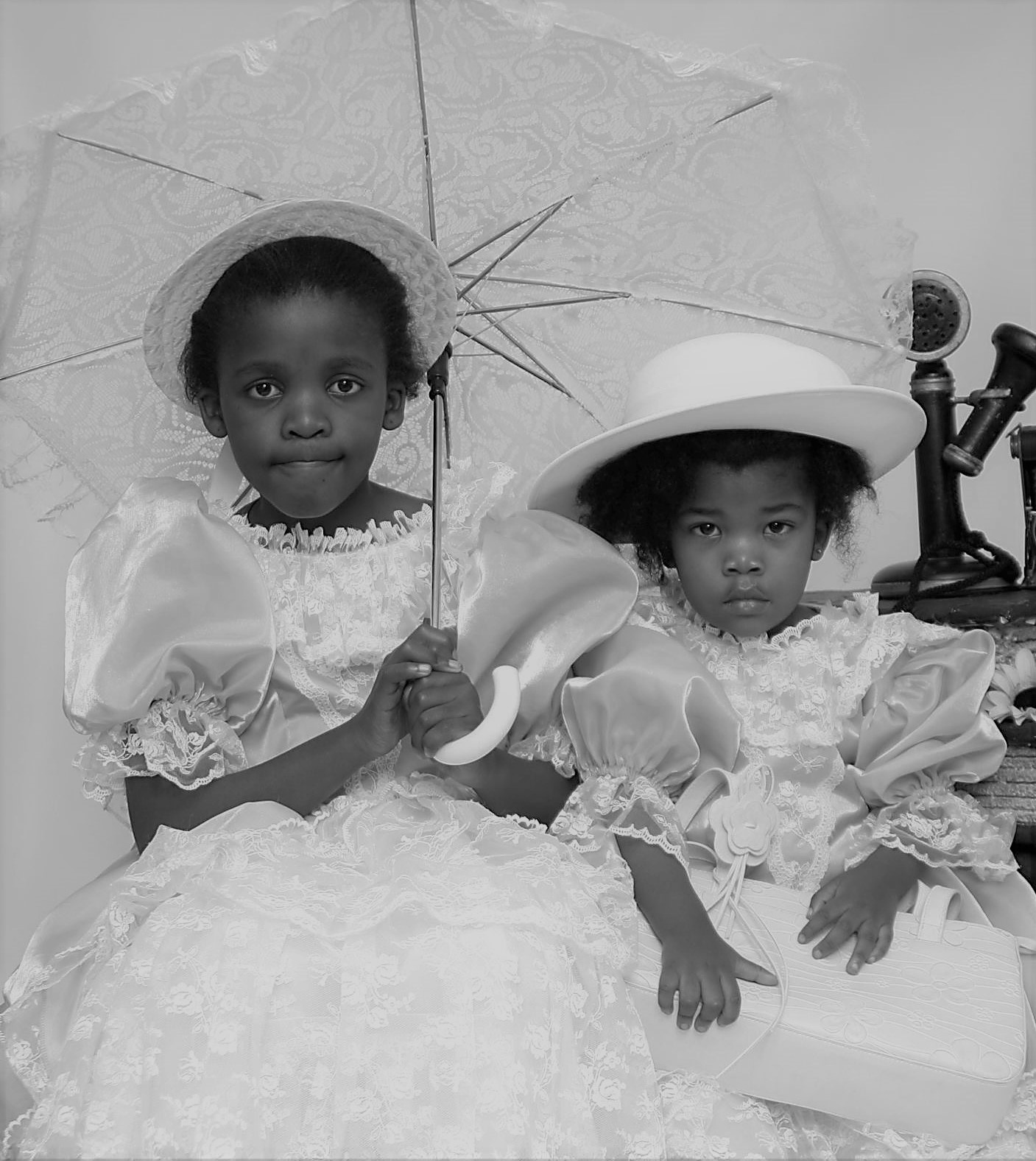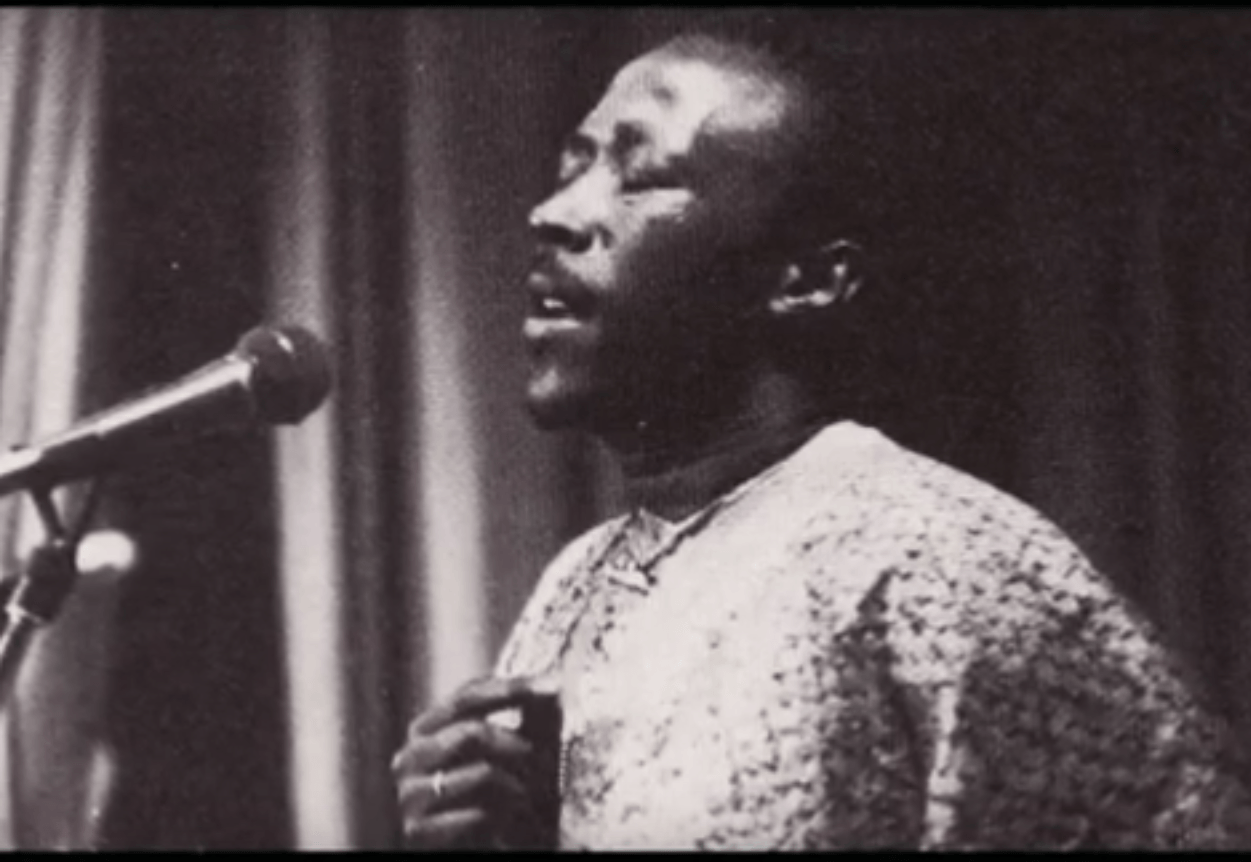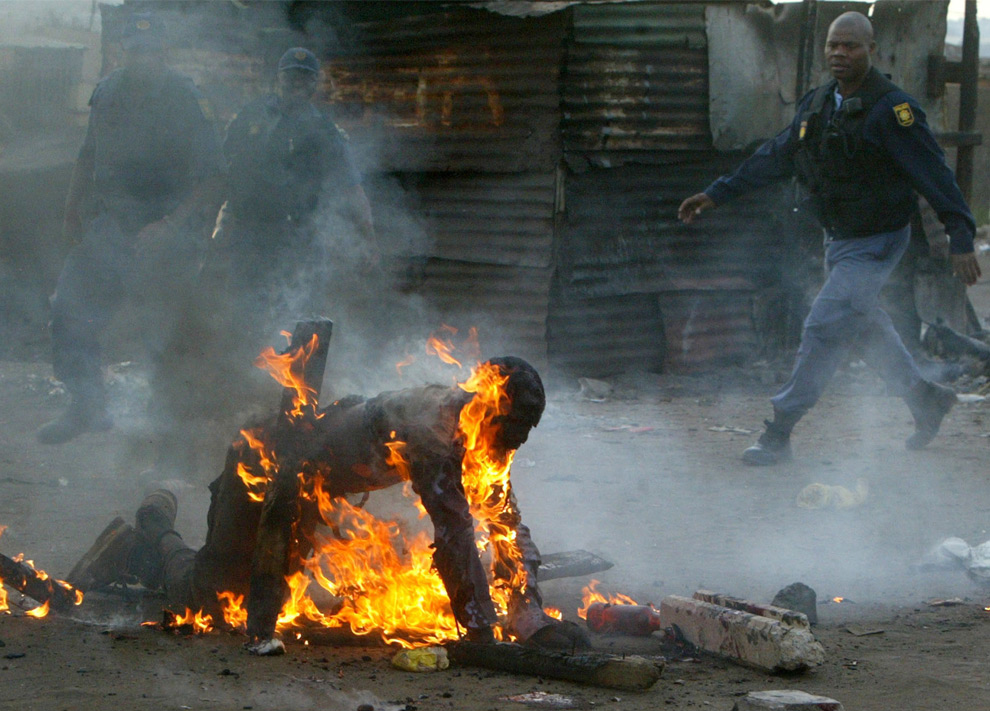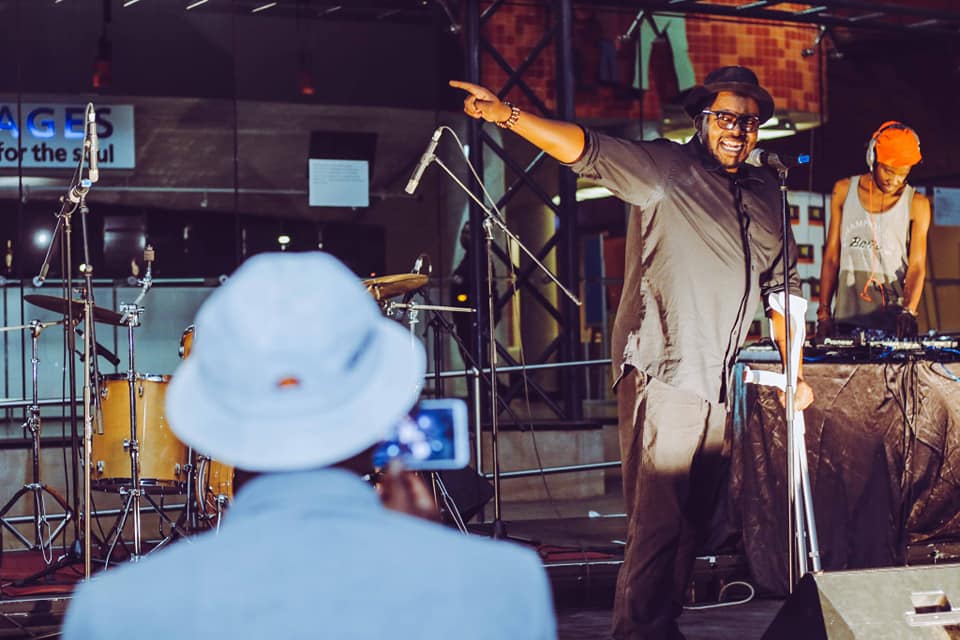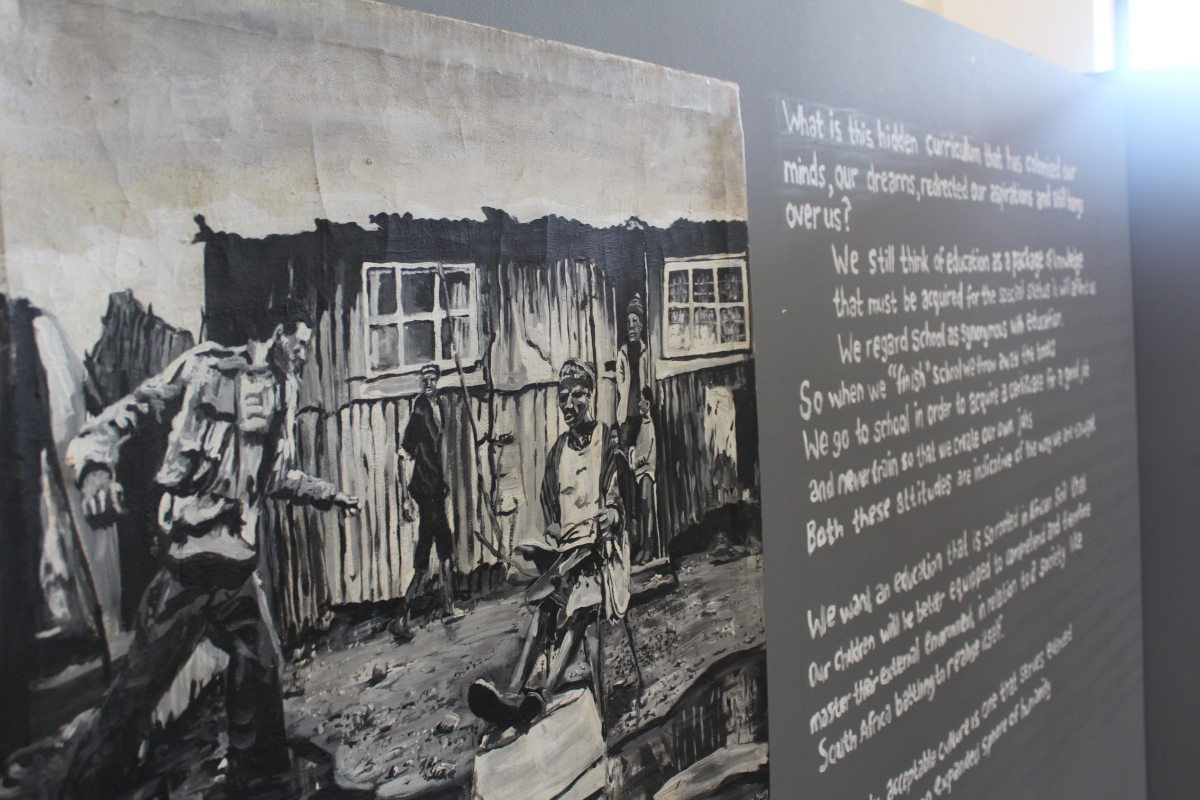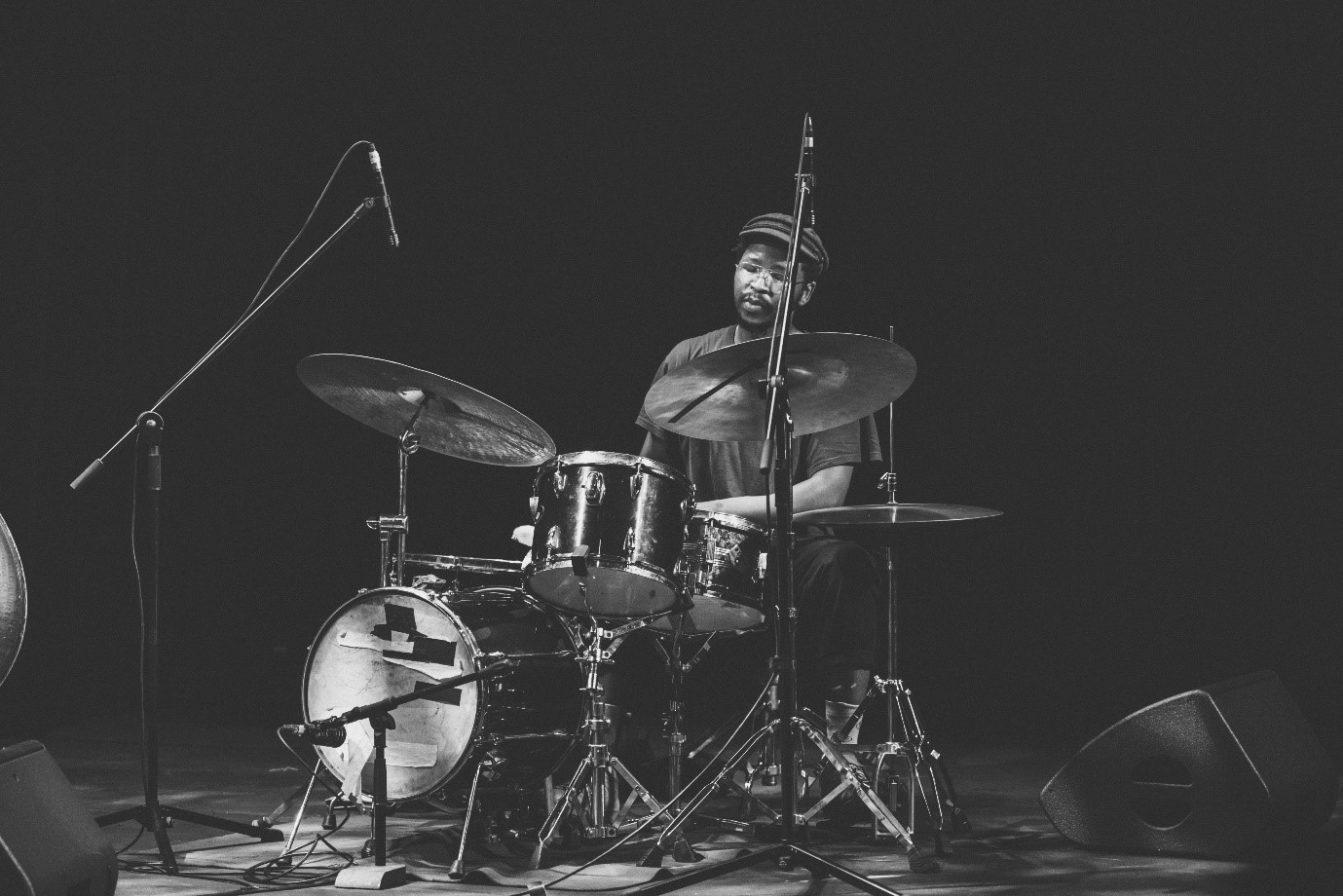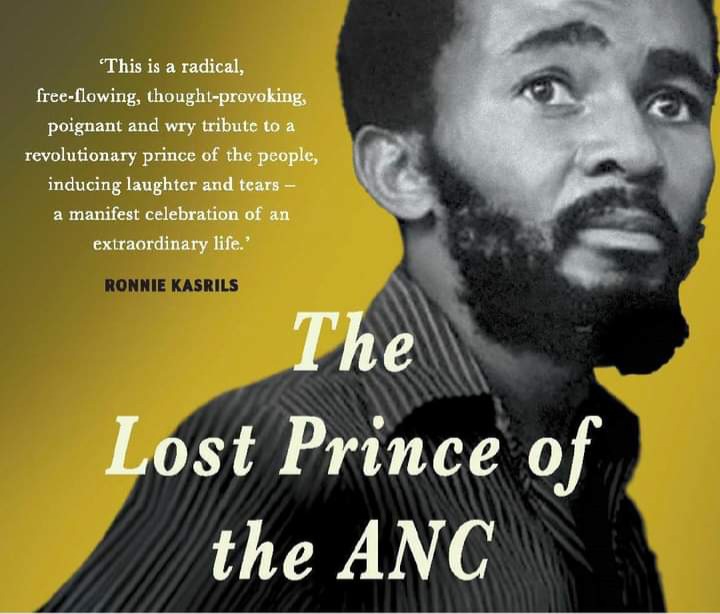Since childhood I have been intrigued by what it meant to be black, finding it deeply unfair that it was my lot to take. Immersed in the diverse setting of Cape Town’s urban working class, my context demanded that this be considered with the highest application of my mind, for it was not obvious. Somewhere in the many hues of brown that made up my inner-city day-to-day life, there I stood — distinctly and without any question, a black girl-child. With no consultation or space for rebuttal.
With this affliction certified by the state, and having been born after democracy’s dawn, a constitutional promise further affirmed that my future of black girlhood would be a far simpler one. This promise ironically proudly declares itself the remedy to our unjust past, while simultaneously reinforcing and settling into my consciousness that I have always been black (as constructed by this same past). Contrary to my daily childhood observations that sometimes suggested otherwise.
Growing up, I was deeply anxious about being outed as black, seeing it as indicative of a flaw in how I navigated the world. Desiring to put just the right amount of Dark & Lovely moisturiser on my hair, in an effort to avoid the greasy relaxer look I had long seen my other black friends get shamed for. However, even these considerations were laughable in that my short, relaxer-damaged and gravity-defying textured ponytail had long exposed me as black. So did my dark skin and flat nose, and the knowledge that a pencil would stand stiff in my already damaged mane. All of this leaving me phenotypically bound to the realm of black, as envisioned by the past regime. Or at least that’s what one would think.
Cape Town’s variant working-class complicated the idea that there was an undeniable correlation between race and phenotype, it posed an existential threat to a carefully chartered map of race. One that centres what is visually seen as irrefutably true, constant and reliable. This led me to look for a more robust explanation for my affliction, the kind that would clearly offer me guidance as to what key distinguishing features to consider when drawing the line between myself, and the majority Coloured them.
I came to understand that what made me black did not lie solely in how I looked, but also in the fact that I ate umphokoqo on hot summer days; that I got on a bus with my family every December for 10-hour-long trips back to the Transkei. I guess I had figured by then that, at a definitional level, being black simply meant existing in social, economic and cultural opposition to a white. The white being the hypothetical cartesian plane from which I (we) was expected to map out my identity. With this white consequently constituting multiple racial identities on its exterior. But I was only coming to see the fragile cultural and geographical markers that too contributed to the racial arrangement of this said exterior that many members of my direct community found themselves in.
Growing up in a neighbourhood of unreliable representations of whiteness, and a dominant community of so-called coloured people meant that I had no meaningful account of whiteness outside of television and my teacher at school. But, I knew there was a reason why our block of flats only had a handful of white tenants. And that the presence of these working-class white people did not in any way make me less black. That they failed at whiteness in the sense that they were living with working-class blacks, coloureds and immigrants, was something that concerned, and maybe even humoured my 6-year-old mind. But never to the point that I felt it challenged what I was learning about race.
Interactions with my coloured neighbours on the other hand called for a more critical account of the South African racial topography. Where you learn about race as objectively ascertainable, neatly codified and informed by a reliable set of traits that are obvious, the push to meaningfully characterise the difference between Black and Coloured presents challenges to this model. Where communities have existed long before the legislated racial classes, the interwovenness of our experiences and ancestries becomes difficult to conceal. And the coloured community illustrates this not only in their heterogeneity — despite popular mainstream representations — but also in the extensive amateur psychoanalytical skills sometimes needed to ascertain the certainty of someone’s colouredness or blackness in this city.
Where all gaatjies* scream Bellville in the same familiar and distinctly coloured cadence, whether they be Somalian or Xhosa, one sees that the characterisation may demand more thought, and may be far more complex than what the (recent) apartheid language configuration of race can contain. And in this piercing through the constitutionally endorsed epistemic plane that seeks to set in stone the continued belief that there is value in ratifying this piecemeal construction of identity that made me a black girl. One that told me that my racial existence is a function of whiteness, leaving me to rely on cultural markers that remain unclear and increasingly blurred to guide how I relate with my coloured neighbours.
When I was six I had the first of many identity crises, spurned by an inability to see how I was not coloured like my many friends at the time. We went to the same schools, churches, hair salons and even spoke the same languages. Hence my anxieties about being outed. I knew that a part of this was community-cultivated self-loathing. It is what many black children experience. But I also know that I found deep discomfort in my failure to see the obviousness in this difference between black and coloured, always uncertain about what set of traits ought to guide me in this determination. Hair? Language? Name? Teeth? Skin? Food?
Guided by self-preservation, I knew enough about this difference to know that speaking vernacular Afrikaans allowed me to lean into an ambiguity that could potentially mitigate the blow of the anti-black harassment that threatened my peace of mind. This anti-blackness is also known intimately by darker-skinned, nappier haired coloured people. But being Xhosa meant that my portion of this violence would be sprinkled with the quasi-xenophobic resentment that my alleged migration from the eastern cape invited. I knew the violence I often anticipated to be held together by these clumsy constructions of identity and fueled by the kind of passion resource depravity can inspire.
The year is 2021 and I often return to these childhood musings to guide my more recent considerations about a possible way forward with regards to our interactions with race, especially in this country. I find myself concerned with its legitimized persistence and reinforcement in otherwise well-meaning discourse aiming to call out coloured anti-blackness; predisposing us into speaking of intra-working class conflict in languages that suggest that we have surrendered to the expectations sewed by our past’s infamous divide and conquer strategies. Demanding us to internalize them in ways that lead us to the further endorsement of colonial sensibilities in our configuration of this country’s contemporary problems.
I think back to my anxieties and curiosities about race, as spatially constructed and simultaneously confused by Cape Town, and think of what scholar Siseko Khumalo** says about the fallacy of epistemicide. A fallacy that moves us to similarly resign to the impositions of various colonial tactics, such as the obviousness of race, as a point of departure in speaking to our problem. A fallacy that wishes to convince that we have always been this way. My vantage point as a child offered me a unique perspective on race. To paraphrase Khumalo, it served as a valuable epistemic site, in my case rooted in childhood, that sought to reveal the truly variant and culturally resilient nature of conquered people.
Facilitated by a query into race, I found myself re-remembering that I, and perhaps many of us, have confronted the incoherencies of it as children learning to navigate the world. And that returning to the probing modes of thinking that guided us as children may perhaps offer a more accessible space from which to question the nature of our current epistemic order. Not only in regards to race but also in regards to the various other ways our difficult and unjust past asserts itself as normal today.
*gaatjies are also known as taxi conductors, and assist with the collection of money and assisting commuters in their taxi commutes travels
**Siseko Khumalo’s ‘Resurrecting the Black Archive Through the Decolonisation of Philosophy in South Africa’

